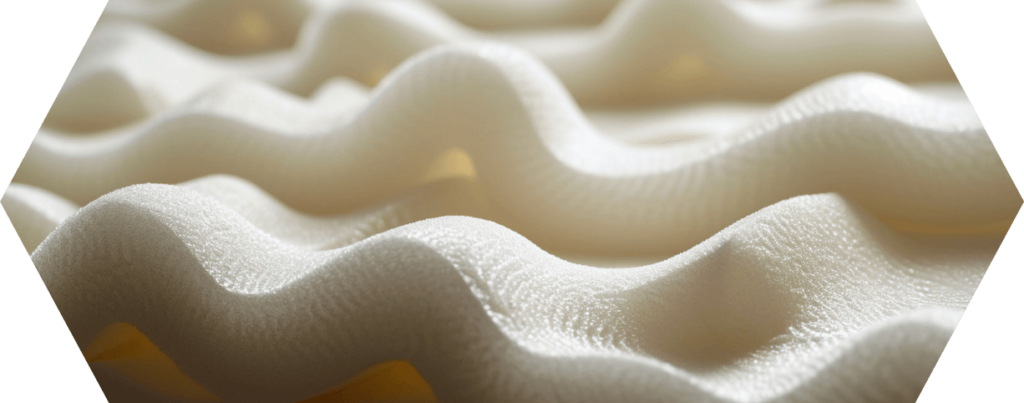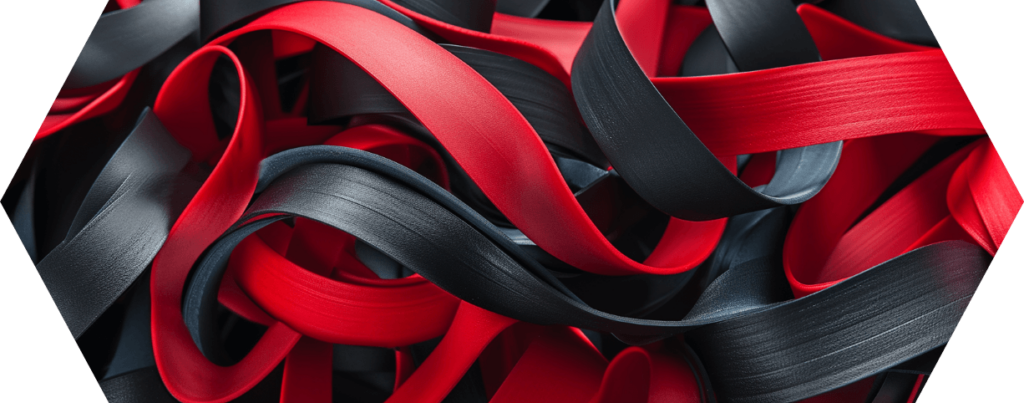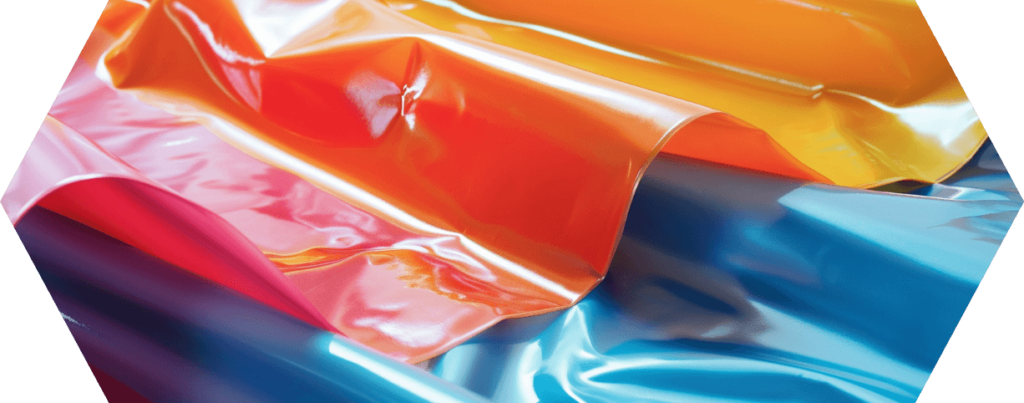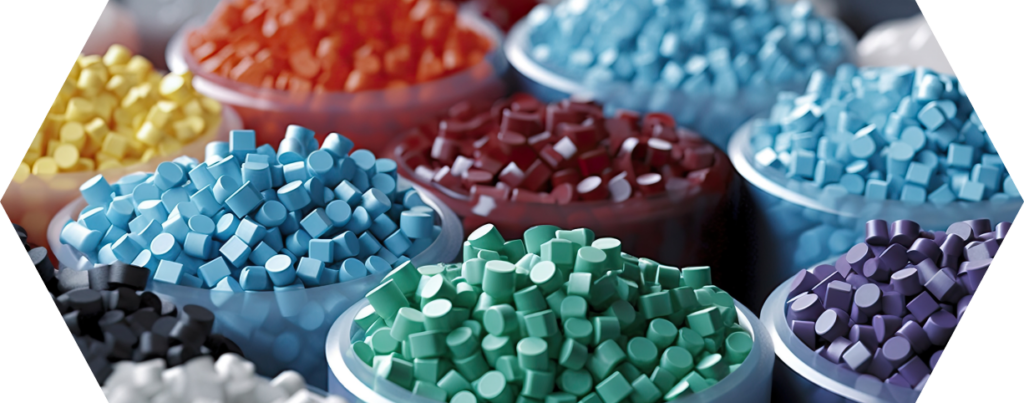PU (polyurethane)
PU: Everything you need to know about polyurethane
Polyurethane, often abbreviated as PU, is a polymer composed of organic units linked by urethane compounds.
It is one of the most versatile materials used in modern industry, known for its flexibility, durability and resistance.
History and development PU was first developed in the late 1930s and has come a long way since then. Originally developed as a replacement for rubber during the Second World War, it has evolved into a material used in a wide range of industries.
Properties of polyurethane The properties of PU are remarkable and diverse:
- Flexibility: PU can be designed from extremely soft to very hard.
- Durability: It is known for its durability and resistance to abrasion, cracking and UV radiation.
- Insulation properties: PU has excellent heat and sound insulation properties.
- Chemical resistance: It is resistant to oils, solvents and many chemicals.
These properties make PU a preferred material in many applications, from furniture and mattresses to insulation materials, footwear and automotive components.
REQUEST O-RINGS QUICKLY AND EASILY?
Almost any dimension available
Offer received in record time
No minimum order quantities or minimum item values
One contact for all concerns
#1 Polyurethane manufacturing process
The production of PU (polyurethane) is a fascinating process that requires a high level of chemical expertise. It starts with two main components: Polyols and diisocyanates.
Raw materials and chemical process
- Polyols: These are organic compounds with several hydroxyl groups and are crucial for the flexibility of the end product.
- Diisocyanates: These chemicals react with the hydroxyl groups of the polyols to form long polymer chains. They determine the strength of the material.
Steps of the manufacturing process
- Mixing: The polyols and diisocyanates are mixed in specific ratios. This ratio determines the properties of the resulting PU.
- Polymerization: This chemical reaction produces long, interwoven polymer chains that form the basis of polyurethane.
- Shaping: The liquid polyurethane can be poured into various molds or used as foam for insulation materials.
- Curing: After shaping, the material is cured to achieve its final strength and structure.
Different types of polyurethane Polyurethane is available in various forms due to its versatility:
- Flexible foam: Widely used in furniture and mattresses.
- Rigid foam: Used for insulation boards and construction applications.
- Elastomers: Used in wheels, rollers and seals.
- Coatings, adhesives and sealants: Protect surfaces and bond materials.
Environmental aspects in production
- The production of PU is energy-intensive, and the industry is trying to find more environmentally friendly methods.
- Recycling and reuse of PU materials are key areas for sustainable development.

#2 Applications of polyurethane in everyday life
PU (polyurethane) is ubiquitous in our daily lives due to its versatile properties. Here are some of the most common applications:
1. furniture industry
- Seat cushion: PU foam offers comfort and durability in sofas and armchairs.
- Mattresses: Memory foam, a PU variant, is known for its supportive properties.
2. automotive industry
- Seat cushion: For additional comfort and safety in vehicles.
- Insulation: Sound and heat insulation for a quieter and more comfortable ride.
3. textile industry
- Sportswear: PU is used in sports shoes and clothing because of its flexibility and durability.
- Waterproof clothing: PU coatings make fabrics water-repellent.
4. construction and insulation materials
- Building insulation: PU foam is an excellent insulator against cold and heat.
- Floor coverings: PU is used in parquet flooring for its durability and ease of maintenance.
5. further applications
- Electronics: Protective coatings and components in electronic devices.
- Medical devices: Sterile and hypoallergenic applications in hospitals and clinics.
| Industry | Application of PU | Special properties of PU |
|---|---|---|
| Furniture industry | Seat cushions, mattresses | Comfort, durability, adaptability |
| Automotive industry | Seat cushion, insulation | Sound absorption, lightness, flexibility |
| Textile industry | Sportswear, waterproof clothing | Durability, water resistance |
| Building industry | Building insulation, floor coverings | Thermal insulation, durability |
| Medical technology | Medical devices and implants | Biocompatibility, sterility |
| Electronics | Protective coatings, components | Protection against environmental influences, durability |
| Packaging industry | Protective and transport packaging | Flexibility, shock absorption |
| Sports equipment | Padding in helmets, protective equipment | Shock absorption, shape adjustment |

#3 Comparison of PU with other materials
PU (polyurethane) offers both advantages and disadvantages compared to other plastics and materials.
This comparison helps to understand the uniqueness and versatility of PU.
Advantages of PU
- Versatility: Can be produced in various degrees of hardness, from soft foam to hard plastic.
- Durability: Resistant to abrasion, cracks and various chemicals.
- Insulation properties: Excellent thermal and acoustic insulation.
- Lightweight: Low weight compared to metals, with high strength at the same time.
Disadvantages of PU
- Costs: The production of PU can be more expensive than that of conventional plastics.
- Environmental compatibility: Questions of sustainability and recyclability are increasingly being discussed.
Comparison with other plastics
- Compared to PVC: PU is more flexible and durable, but also more expensive to produce.
- Compared to silicone: PU is less heat-resistant, but offers better mechanical properties.
Sustainability and recyclability
- PU recycling is complex, but the industry is working on more environmentally friendly solutions and recycling techniques.
- New developments such as bio-based polyurethanes offer more sustainable alternatives.
| Type of polyurethane | Description of polyurethane | Hardness range (Shore) |
|---|---|---|
| Flexible PU foam | Soft, used for upholstery and mattresses | Shore 0A – 50A |
| Semi-flexible PU foam | Medium firmness, often used in the automotive industry | Shore 50A – 70A |
| Rigid (hard) PU foam | Rigid, for insulation and structural components | Shore 70A – 90A |
| PU elastomers | Very resistant, for wheels and seals | Shore 60A – 95A |
| PU integral foam | Firm surface with soft core, for armrests, headrests | Shore 45D – 75D |
| PU casting resin | Very hard, for industrial applications and coatings | Shore 80A – 70D |

#4 Innovations and the future of polyurethane
The future of PU (polyurethane) looks promising thanks to constant innovation and research. Here are some key areas where PU is evolving:
Innovative applications
- Bio-based polyurethanes: Development of PU from renewable raw materials, which reduces the environmental impact.
- Medical technology: Use in biocompatible materials and as a component in medical devices.
- Smart textiles: Integration of PU in intelligent textiles for advanced functions such as temperature control.
Research projects
- Research projects focus on improving the recyclability of PU and reducing the environmental impact of production.
- Development of lighter and stronger PU molds for the aerospace industry.
Trends and future direction in the PU sector
- Growing focus on sustainability and environmentally friendly production.
- Adaptation to the needs of rapidly developing industries such as electromobility and renewable energies.

#5 PU O-rings - Indispensable in industry and technology
PU (polyurethane) O-rings are an essential component in many industrial and technical applications.
These small but powerful elements play a decisive role in sealing technology.
Properties of PU O-rings
- Resistance: PU O-rings are known for their excellent abrasion resistance, which makes them particularly durable.
- Flexibility: They retain their shape and elasticity over a wide temperature range, making them suitable for different environments.
- Chemical resistance: PU is resistant to many oils, greases and some solvents, allowing PU O-rings to be used in chemically demanding situations.
Applications of PU O-rings
- Hydraulics and pneumatics: They effectively seal components in hydraulic and pneumatic systems to prevent leaks.
- Automotive industry: In vehicles, they are used in various systems such as fuel, oil and cooling systems.
- Mechanical engineering: They are used in machinery and equipment where they protect against dust and other contaminants.
- Aerospace: Due to their resistance to extreme conditions, they are in high demand in the aerospace industry.
- Household appliances: They can also be found as sealing elements in everyday appliances such as washing machines and dishwashers.
Why PU O-rings? The choice of PU for O-rings lies in its unique combination of durability, flexibility and resistance. These properties make PU O-rings the ideal solution for demanding sealing applications where conventional materials could fail.

#6 FAQ section: PU (polyurethane)
Finally, some answers to frequently asked questions.
#6.1 What are the basic chemical components of polyurethane?
Polyurethane is mainly produced from two chemical components: polyols and diisocyanates.
The polyols contribute to the flexibility of the material, while the diisocyanates are responsible for the strength and structure.
#6.2 How environmentally friendly is PU?
PU is environmentally friendly in terms of durability and efficiency in many applications. However, there are challenges in terms of environmentally friendly production and disposal.
The industry is working on solutions such as the recycling of PU and the development of bio-based polyurethanes to improve environmental compatibility.
#6.3 Can PU products be recycled?
Yes, PU products can be recycled, although the process can be complex.
There are various methods of PU recycling, including mechanical shredding and chemical breakdown into its basic components to produce new materials.
#6.4 Is polyurethane harmful to health?
In its finished form, PU is generally not harmful to health. However, hazardous isocyanates can be released during the production and processing of raw polyurethane.
Therefore, safety measures and correct handling are important to minimize health risks.
“I am convinced that we should share our knowledge with the world. I hope I have been able to answer all your questions. If you have any further questions, please feel free to contact us at any time. We will be happy to help you.”

Lord of the O-rings
Author of the Sealing Academy
